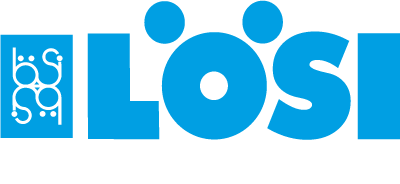EPMM Hydraulic Motor
Hydraulic Motors Type EPMM
LöSi® hydraulic motors type EPMM® are the smallest design of our gerotor motors. On EPMM® gerotor motors, the valve control is located in the shaft. The drum valve is part of the output shaft. The cardan shaft transmits the mechanical energy from the gear set to the output shaft and thus takes over valve control.The EPMM® hydraulic motors are available in various designs and are available, for example, with an integrated pressure relief valve or speed sensor.
EPMM Orbital Motor FAQ
What are typical applications for EPMM orbital motors?
EPMM orbital motors are suitable for various applications, including:
- Conveyor belts
- Textile machines
- Machine tools
- Mining machines
- Fans
- Construction machinery
What are the key technical specifications of EPMM motors?
EPMM motors are available in various sizes with different displacements (8.2 to 50 cm³/rev). Key specifications include:
- Maximum speed: Up to 2450 rpm
- Maximum torque: Up to 8.8 daNm
- Maximum power: Up to 3.2 kW
- Maximum pressure drop: Up to 140 bar
- Maximum oil flow: Up to 25 l/min
- Hydraulic oil: HLP (DIN 51524) or HM (ISO 6743/4)
- Oil temperature range: -40°C to 140°C
- Optimal viscosity: 20 to 75 mm²/s
- Filtration: ISO code 20/16 (recommended minimum filtration 25 µm)
How do I interpret the EPMM motor order code?
The EPMM motor order code is structured to specify various options. Here's a breakdown:
- Pressure relief valve: Options for presence and connection position.
- Mounting flange: Options for presence and type of flange.
- Connection type: Rear or side connections.
- Displacement: Motor size and displacement.
- Shaft: Type (straight or splined) and diameter.
- Connections: Thread standard (BSPP or metric).
- Pressure relief valve position: Flow direction for models with relief valves.
- Valve setting: Pressure setting for the relief valve.
- Special features: Options like speed sensor, low leakage, or reversible rotation.
- Custom design: Option for factory-defined designs.
What are the different mounting options for EPMM motors?
EPMM motors can be mounted with or without a flange:
- Standard: Without flange, using three mounting screws.
- Option F: With oval flange and two mounting holes.
How is the allowable radial shaft load determined?
The allowable radial shaft load depends on the distance (L) from the point of load application to the mounting surface. It is calculated using the following formula:
Prad = 13040 / (61.5 + L) * (600 / (n * X)) (in daN), where:
- L is the distance in mm (must be ≥ 80 mm)
- n is the speed in rpm
- X is a factor from the performance charts.
A flexible coupling should be used if the calculated load exceeds the allowable limit.
What are the operational features of the "LL" (Low Leakage) series motors?
LL series motors are designed for the standard operating range but with significantly reduced volumetric losses. They are ideal for hydraulic systems with motors connected in series, requiring low leakage.
What are the benefits of the "FR" (Free Running) series motors?
FR motors feature increased clearances between rotating parts, reducing mechanical resistance and improving shaft rotation. This design also enhances lubrication and extends motor life, especially at high speeds (over 300 rpm) and low pressure drops. However, the volumetric efficiency may be slightly reduced.
What types of speed sensors are available for EPMM motors?
EPMM motors can be equipped with a speed sensor (Option RS) that provides a digital output signal proportional to the motor speed. The sensor comes in a separate housing and must be installed according to the provided instructions.

